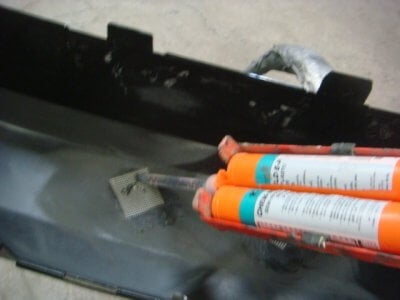How to Spray Car Paint
The art of spraying is a skill like anything else that gets better with experience. Most people at first are intimidated the first time they pick up a paint gun. Once you get going you’ll start to find a comfortable spot, but here are a few tips to get you off to a great start.
Keep it straight! The most common error when starting is the tenancy to angle your gun, try to keep it spraying parallel with your panel to ensure a nice consistent spray. If your angle is too severe you will cause your paint to land too wet in some areas and to dry in others resulting in a striped look. (most noticeable on metallic colors) Worth noting is that primer/sealer and clear coat spray quite similarly while basecoat is another technique. So first we will go over the base then cover the rest. Basecoat spraying and base coat blending also differ. When spraying a complete vehicle you simply need to focus on maintaining a consistent medium build over the entire job. When blending you need to have a certain degree of control to keep your blends smaller. For a new painter it is best to plan for a long blend (say 3 ft) then as you learn how the colors blend and types of challenges to expect, focus on staying within a foot or less. Keeping your pressure low and choosing the appropriate reducer based on the ambient temperature is key when blending difficult colors. As you spray you will become familiar with the more challenging high metallic colors. certain shaped metallic causes harder blends as they don’t land as evenly, especially on the edges which causes a ring or halo look. There are several different blending techniques that can help you handle harder colors.
Now when it comes to primer, sealer and clear coat the biggest misconception is expecting a perfectly flat, orange peel free finish. This is just not the way urethane products lay, you will always have a bit of peel. The only way to get that perfectly flat finish is by sanding and polishing after drying. So again here reducer/hardener speed is key. The hotter it is and/or bigger the job, the slower the hardener/reducer. You want to apply your clear in particular fairly wet, just not to the point it runs. You also need to maintain a wet edge while spraying as you cannot really touch up areas afterward, make sure the clear looks good as soon as it goes on, the only way to fix it is by polishing afterward. The most obvious but often overlooked tip is to look at the product tech sheet and ensure your equipment settings are right for your product. Using too large or small of a tip size can really cause a challenge.
Other then that all I can say is don’t let the nerves get to you, a relaxed painter will always turn out a better job. While higher-end guns can produce a better finish overall, lower-end guns can still get the job done.







